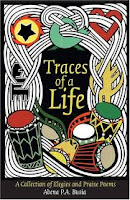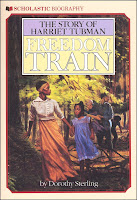The Year 2012 in Review

December in Review: December was the 'challenge round up' month; hence, I set forth to complete the reading of all uncompleted challenges. In all I read a total of six (6) books by the 27th December with a decision of pushing any book read in the four days left to 2013. The six books gave me a total of 1,490 pages or an average of 48.06 pages per day.The following are the books read: Mrs. Dalloway by Virginia Woolf. This is my first Woolf and was not disappointed. Death Comes for the Archbishop by Willa Cather. Freedom Train: The Story of Harriet Tubman by Dorothy Sterling A Farewell to Arms by Ernest Hemingway Traces of a Life: A Collection of Elegies and Praise Poems by Abena P.A. Busia Search Sweet Country by Kojo Laing. YEAR IN REVIEW Books Acquired Almost all the books read in 2012 (excludes Pdfs) The objective for 2012 was to make a dent into my unread books. I wanted, seriously, to not be a part of those whose unread books keep piling ...







.jpg)






